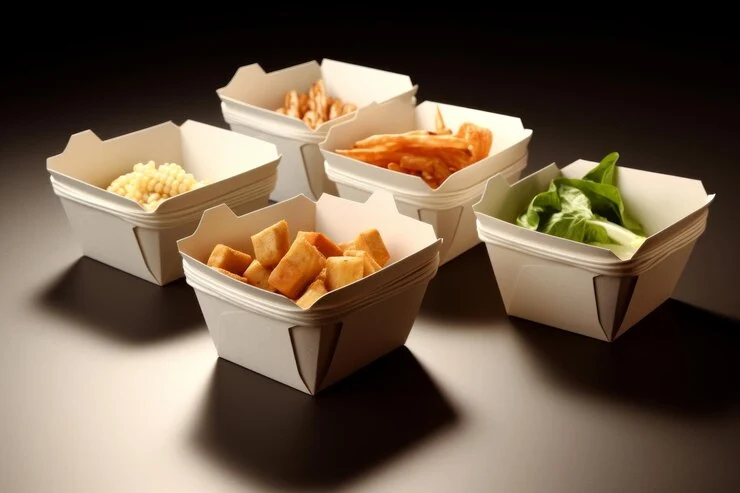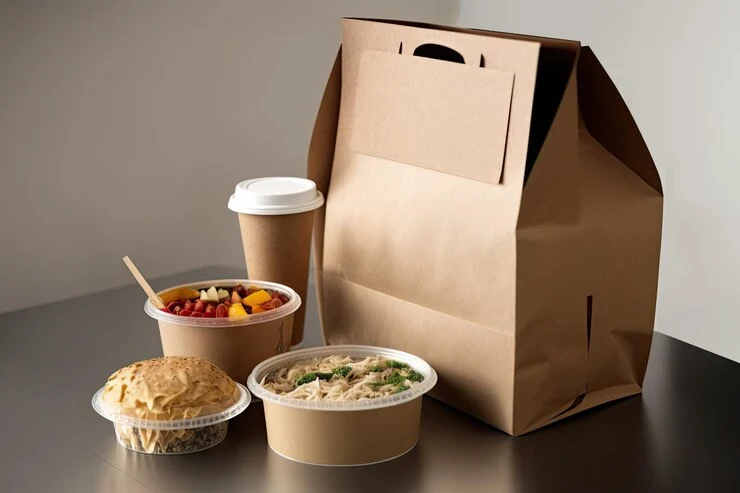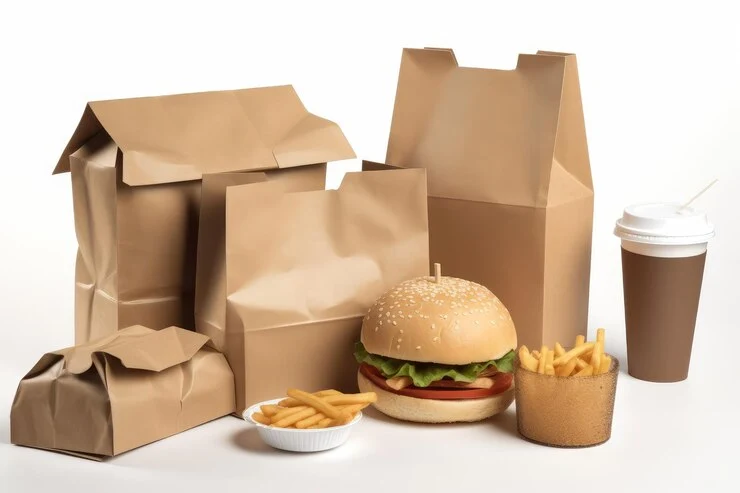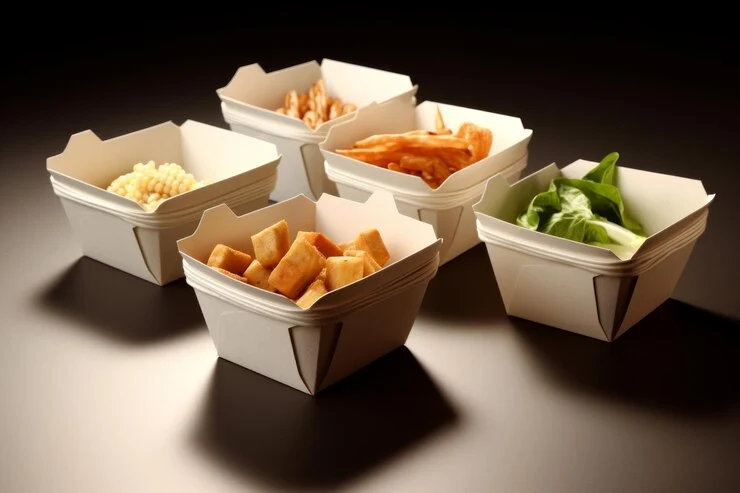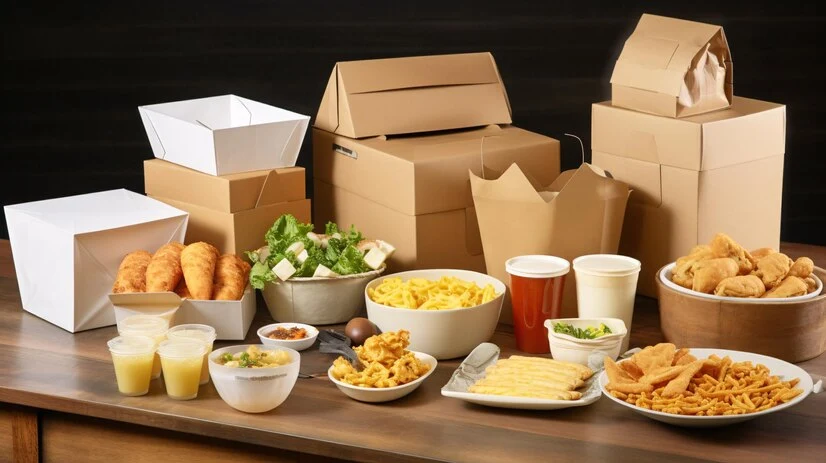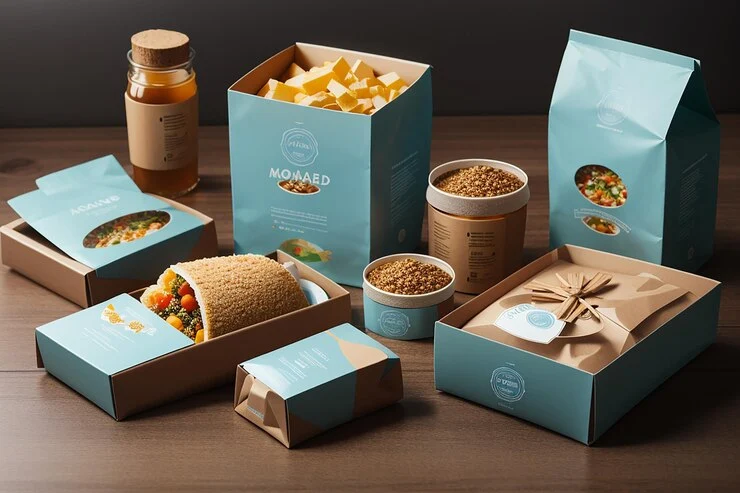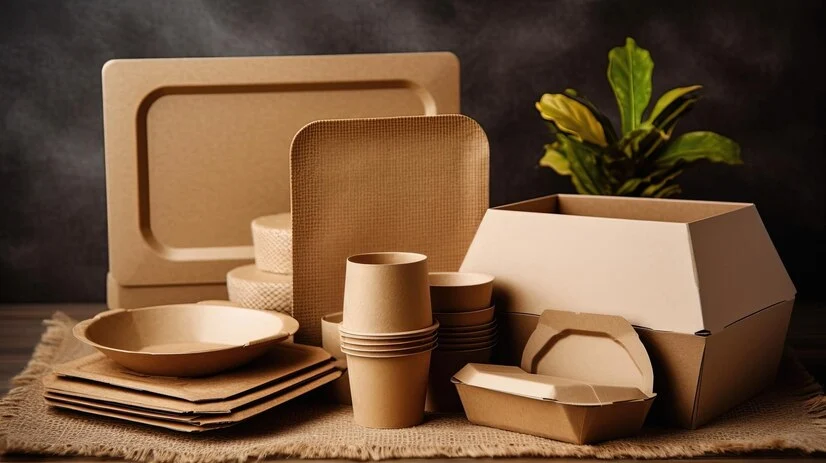Learn about the development of boxes for food packaging , from antiquated preservation techniques to contemporary, environmentally friendly options. Get advice & FAQs for selecting the appropriate boxes!”
Key Takeaways:
- Selecting the right boxes for food packaging is essential to preserving product freshness and guaranteeing client pleasure.
- Effective packaging requires an understanding of the various box types and how well they fit different food items.
- To safeguard customers and companies, proper labeling and adherence to food safety laws are essential.
- Purchasing premium, environmentally friendly packaging improves consumer loyalty and brand reputation in addition to helping the environment.
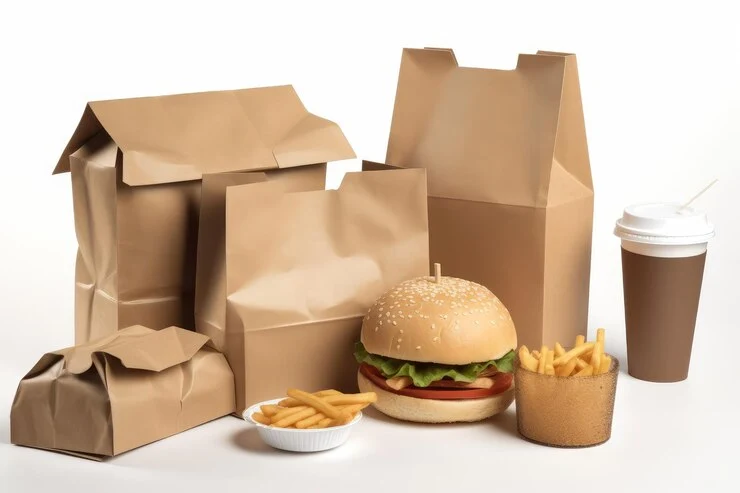
Introduction : Boxes For Food Packaging
The preservation of product freshness and quality is greatly aided by packaging in the busy food industry. Similar to food packaging, the type of box you choose to package perishable items can have a big influence on your company’s overall performance. Here at Fresh Pack Solutions, We are aware of how crucial it is to choose the appropriate food packing boxes to guarantee optimal freshness and client pleasure.
Understanding the Importance of Packaging
Prior to going into the details of boxes for food packaging, Allow us to explore why packaging matters. Packaging serves several vital places beyond simply containing the product. It protects the contents from foreign procurators similar to humidity, air, and physical damage during transportation and storehouses. also, packaging serves as a means of message, furnishing essential information to consumers describing product constituents, nutritive value, and expiration dates.
Types of Boxes for Food Packaging
There is no one-size-fits-all solution when it comes to food packaging. To preserve freshness and quality, various food kinds require different packaging techniques. Let’s examine some typical box types used in food packing in more detail:
- Corrugated Boxes:
- Keywords: corrugated boxes, durable packaging, eco-friendly.
- Folding Cartons:
- Keywords: folding cartons, customizable packaging, branding.
- Plastic Containers:
- Keywords: plastic containers, convenience, transparent packaging.
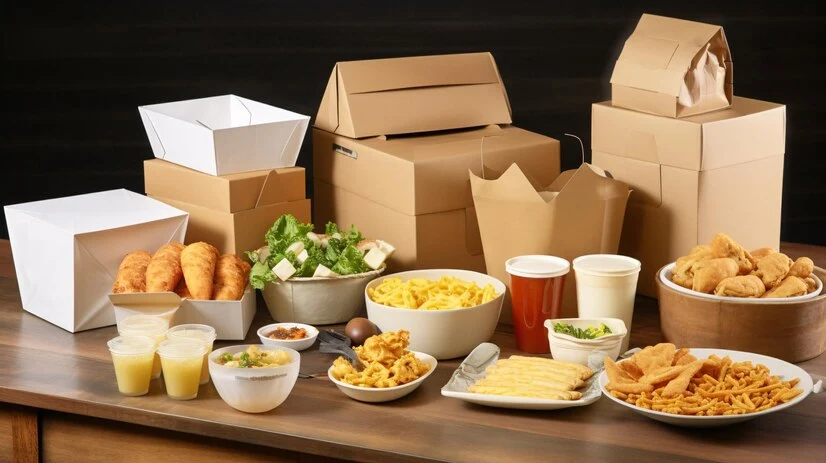
Analysis of Boxes for Food Packaging
Let’s delve deeper into the analysis of boxes for food packaging through a comparative table:
| Type of Box | Durability | Eco-Friendly | Customization | Transparency | Cost |
|---|---|---|---|---|---|
| Corrugated Boxes | High | Yes | Limited | No | Medium |
| Folding Cartons | Medium | Yes | High | No | High |
| Plastic Containers | High | No | Medium | Yes | Medium |
Ensuring Food Safety and Compliance
Achieving food safety is crucial in the food sector to safeguard customers and uphold brand credibility. When selecting boxes for food packaging, Respecting food safety laws and guidelines is essential. Part of this includes using materials that are safe for direct food contact, such FDA-approved plastics and food-grade cardboard.
Sustainable Packaging Solutions
As consumers become decreasingly conscious of environmental effects, there’s a growing demand for sustainable packaging results. inoculating in eco-friendly packaging not only reduces your carbon copy footmark but also enhances your brand’s character as a responsible and ethical business. call options similar to biodegradable accouterments, recyclable packaging, and reducing packaging waste to minimize environmental jolt.
Evolution of Boxes for Food Packaging
Over time, the development of boxes for food packaging has been nearly implicated with creations in technology, changes in consumer preferences, and growing mindfulness of environmental sustainability. From unpretentious onsets to ingenious results, the trip of food packaging boxes reflects the dynamic nature of the food assiduity.
Historically, simple versions of boxes for food packaging similar to leaves, beast skins, and complexion jacks were exercised to store and transport food. These early styles were primarily driven by the want for conservation and security against corruption. As societies evolved, consequently packaging ways, with the emergence of rustic beaters and baskets furnishing more durable and movable options for food storehouses and transportation.
The Industrial Revolution marked a significant turning point in the history of Boxes For food packaging, as mass product ways enabled the wide relinquishment of cardboard and paperboard boxes. These featherlight and cost-operative accouterments revolutionized the food packaging assiduity, making it easier to transport and distribute food productions on a voluminous scale. also, the preface of printing technologies allowed for branding and labeling on packaging, easing product isolation and marketing sweats.
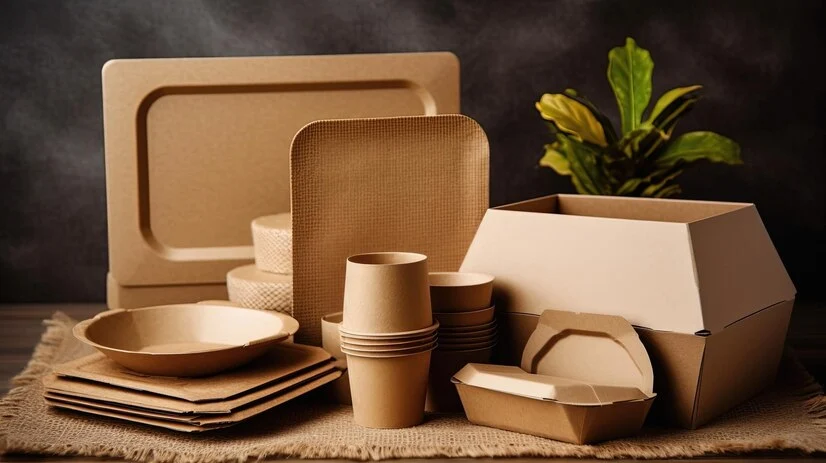
The emergence of plastics in the middle of the 20th century brought about yet another revolution in the packaging sector by providing a robust and adaptable substitute for conventional materials. Perishable food packaging has seen a surge in the use of plastic bags and containers due to its moisture resistance, flexibility, and transparency. However, in recent years, there has been a movement toward more environmentally friendly packaging options due to worries about plastic waste and environmental damage.
Moment, the seat on sustainability and eco-consciousness has prodded invention in food packaging, leading to the evolution of biodegradable accouterments, compostable packaging, and applicable holders. Companies are decreasingly prioritizing environmentally friendly packaging options to meet consumer demand and reduce their carbon copy footmark. also, creations in packaging technology, similar to smart packaging and active packaging, are furnishing new ways to extend the shelf life of food production and enhance food security.
In conclusion, the evolution of boxes for food packaging reflects the ever-changing geography of food assiduity, from senior conservation styles to ultramodern sustainable results. As we continue to strive for invention and environmental responsibility, the future of food packaging promises to be both instigative and transformative, suiting the expressway we store, exhilarate, and consume food for conceptions to come.
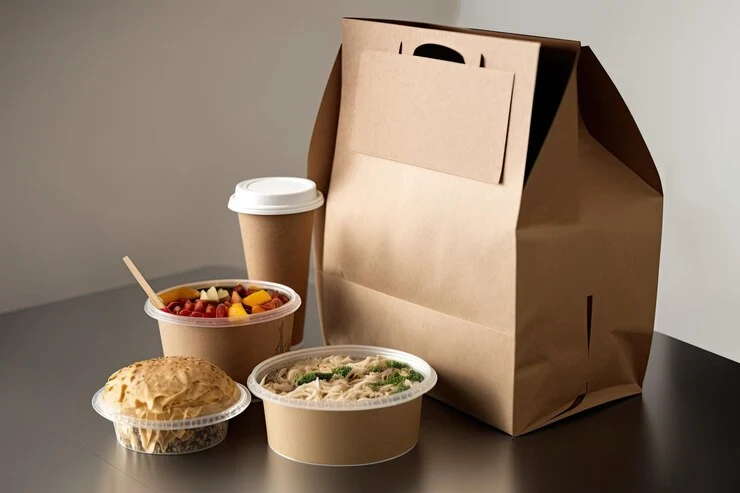
Conclusion
In conclusion, choosing the right boxes for food packaging is essential for maintaining newness, icing food security, and enhancing brand character. By gathering the nonidentical manners of boxes accessible and their felicity for colorful food particulars, you can make informed opinions to meet your packaging needs effectively. Flashback to prioritizing sustainability, compliance with food security regulations, and imprinting openings when opting for packaging results for your productions. At Fresh Pack Results, we’re immured to furnishing high-quality, customizable packaging results acclimatized to your special conditions. communicate with us for a moment to elate your packaging game and delight your guests with fresh, succulent productions every time!
Frequently Asked Questions about Boxes for Food Packaging
1. What kind of boxes for food packaging work best for storing perishable food items?
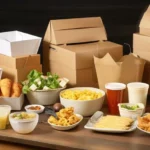
Fruits, vegetables, and meats are examples of perishable foods that should be packaged in boxes that provide sufficient protection from moisture and physical harm. Because of its strength and capacity to withstand moisture, corrugated boxes are frequently suggested as the best option for shipping perishable items. Additionally, things that need to maintain a specific temperature during travel might need to be placed in insulated boxes or coolers.
2. How can I make sure that the food safety laws are followed by the boxes that I package food in?

Respecting food safety laws is essential to safeguarding customers and preventing legal problems. Materials used for food packing boxes must be imperative that materials used for food packing boxes are FDA-approved for direct food contact and compliant with applicable safety regulations. Furthermore, to give customers vital information like ingredient lists, nutritional data, and expiration dates, accurate labeling and documentation are required.
3. What are some green boxes for food packaging options?
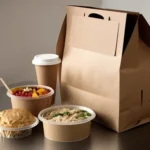
Businesses are looking for sustainable alternatives to standard packaging materials as customer demand for eco-friendly packaging grows. Biodegradable materials like compostable paperboard, recyclable plastics, and reusable containers made of materials like glass or stainless steel are a few sustainable packaging solutions for food goods. Businesses may also cut down on packaging waste by using recycling programs and minimalist package designs.
